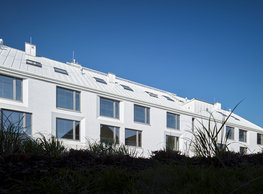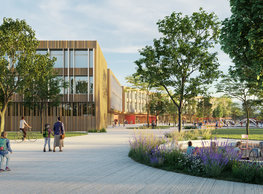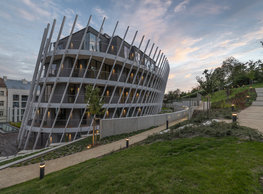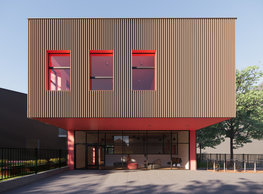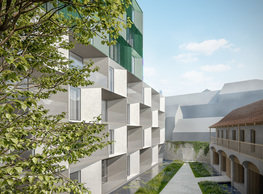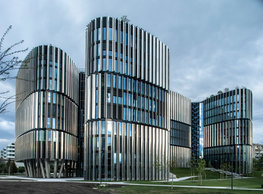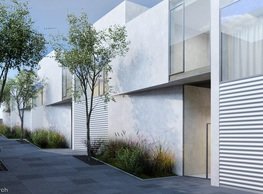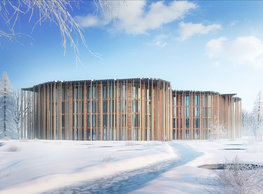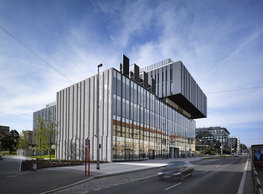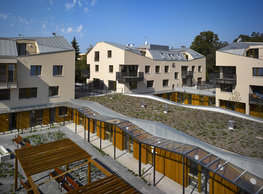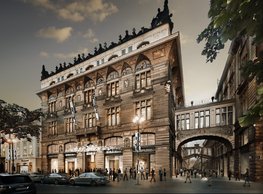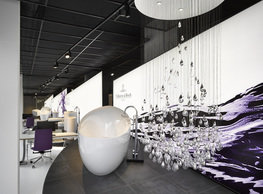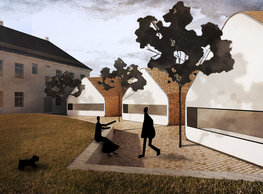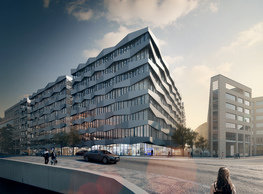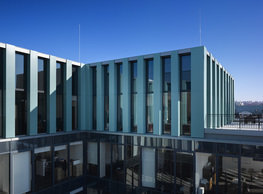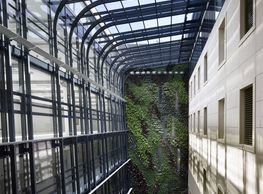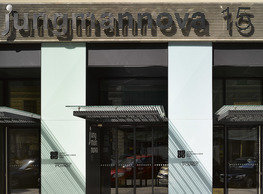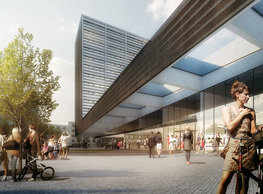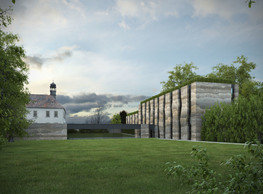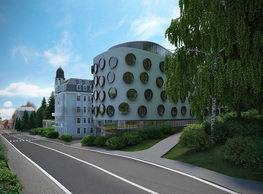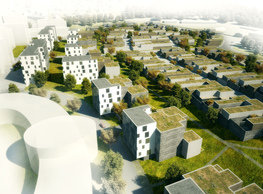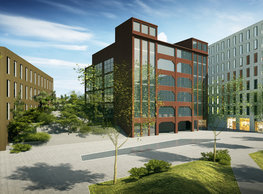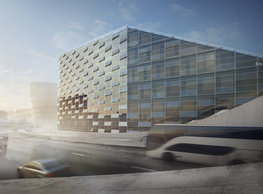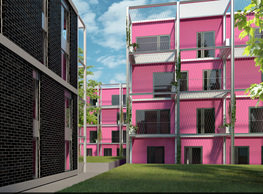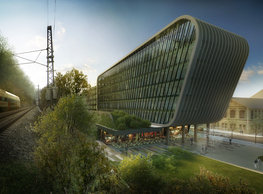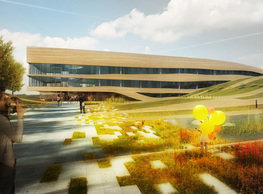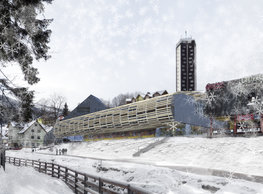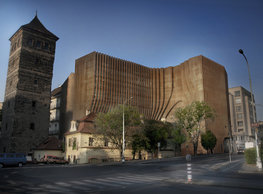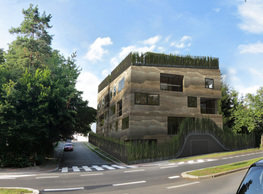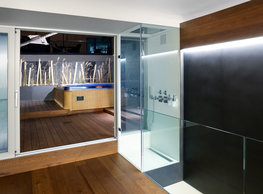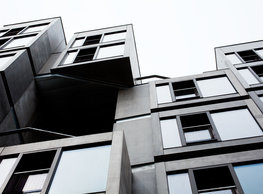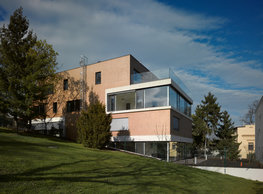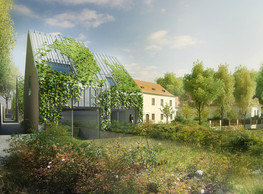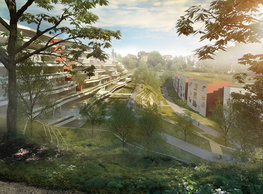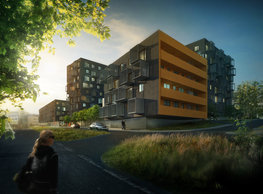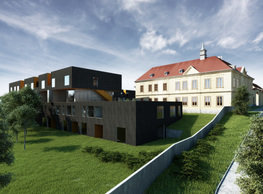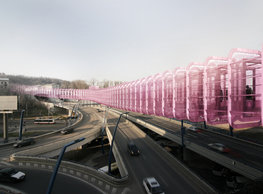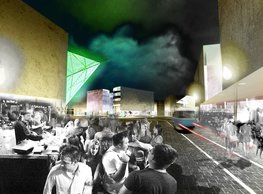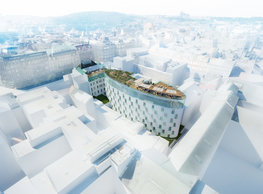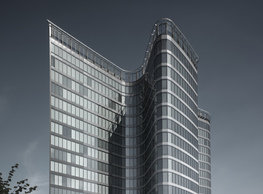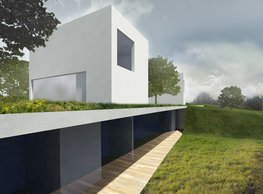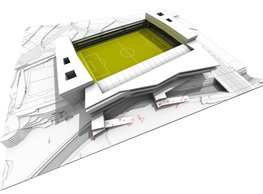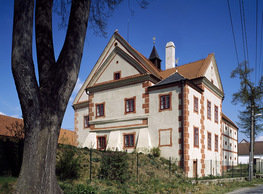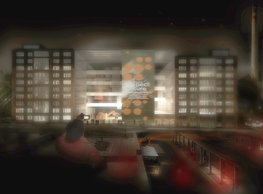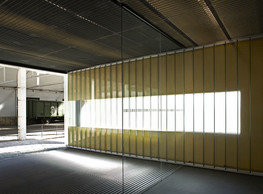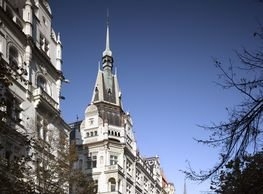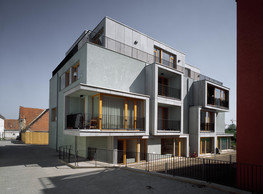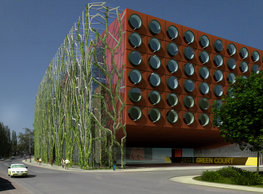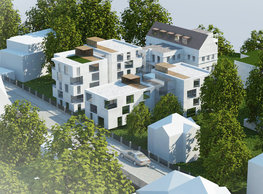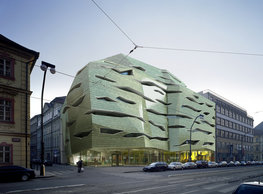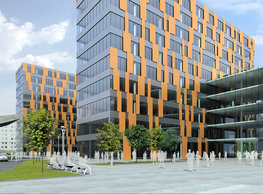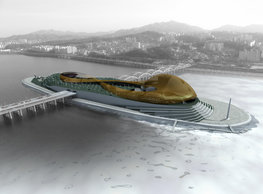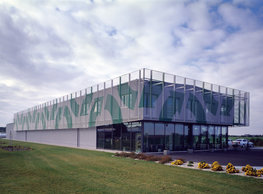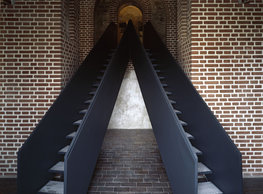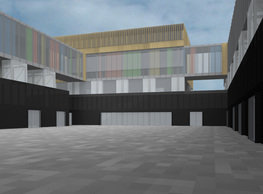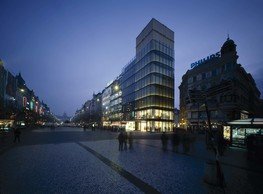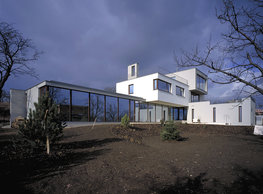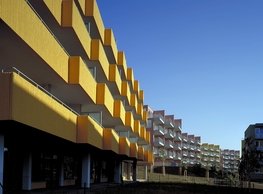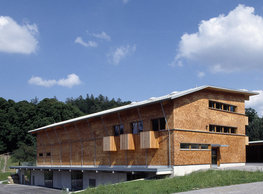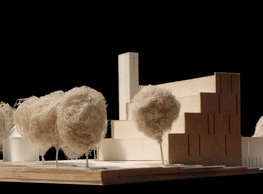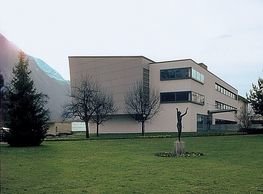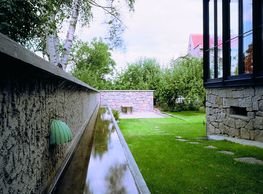The Saint Vitus Cathedral has a construction history of over 1000 years. The first ecclesiastical building in this place was a cylindrical rotunda with three to four apses built by Saint Wenceslaus. He was buried in the southern apse of his rotunda. A three-nave Romanesque basilica with east and west crypts and a preserved tomb apse of Saint Wenceslaus complemented by a capitulary cloister with an ambit and a bishop house was built in the 12th century. These structures were removed in the 14th century during the reign of Charles IV; a Gothic cathedral was built in their place completed to its contemporary form only in 1929. The new Gothic cathedral respected the Saint Wenceslaus’ tomb covering it by the magnificent Chapel of Saint Wenceslaus. An underground Royal Tomb was built on the Cathedral’s central axis. During the rule of Rudolf II in the 16th century, a marble mausoleum was built above it to accommodate tombs of Habsburg emperors. The Cathedral was renovated and completed under architect Kamil Hilbert at the turn of the 19th and 20th centuries. Archaeological excavations were part of this renovation. Those conducted below the current Gothic cathedral discovered valuable authentic remains of all previous structures. The Royal Tomb was surveyed together with the surrounding tombs and, naturally, the Chapel of Saint Wenceslaus. Findings of ancient structures, floors, columns, plastering, and structural details were so crucial that a decision was made not to backfill them but span them by a concrete slab, illuminate, and open to the public. That was carried out according to Hilbert’s project in 1929 and remained more-or-less unaltered until our recent modification. Between 1934 and 1936, sarcophagi designed in the Art-Deco style by Kamil Roškot were added to the Royal Tomb. Our project for repairs regarded the entire public underground of the Saint Vitus Cathedral. The existing electricity wiring and cabling and old lighting were removed first. Then, restorers treated all original surfaces and cleaned stone elements by pressure steaming restoring original colours of walls and floors. Archaeologists conducted partial surveys at the same time and transported numerous fragments of architectural members to a depository. Original wrought railings separating visitors to the crypt from inaccessible areas were restored, and new steel elements with stainless steel netting were added. To protect many original archaeological terrains found here, steel frames filled with stainless steel netting were installed around them and backfilled with pebbles. Each wrought grate and the forged entrance to the tomb chamber were restored and newly glazed. Stone tiling was completed, and Romanesque, Gothic, and Renaissance finishes including frescoed plasters were likewise restored in some parts. Reinforced concrete ceilings and their supports were painted black with added mica; they were optically stifled, and the entire space became calmer this way. All the spaces including the Royal Tomb with the restored sarcophagi got new lighting by Erco, and new wiring and trunking. The new concept of ventilation of all spaces with automatic regulation of airflow depending on the number of visitors (TP – ing. Červenák) is a separate chapter in the restoration of the underground of the Cathedral. A special ventilation unit designed as a vertical stainless steel stela was installed under the original cover of the entrance into the crypts on the axis of the Cathedral. The stela is at the same time designed as an info panel with a loop of video animation about the construction history of the Cathedral and funerals of Czech kings and Roman emperors. Steel, bronze, and sandblasted glass ventilation flues are installed onto the old ventilation channels in the nave creating an illusion of tall candles around the marble mausoleum. At the end of the repair, remains of Boleslav I and his wife were buried in the newly designed sarcophagus sculptured from polished black granite. The sarcophagus is placed in the basement of the Chapel of Saint Wenceslaus close to the place where both skeletons were discovered. In the historical context, the grave of the fratricide is thus sub-positioned towards the remains of Saint Wenceslaus in the Chapel above. The repairs to the underground premises of the Cathedral were completed upon the 700th anniversary of the birth of Charles IV on 14 May 2016.
portfolio
![]()
monastery of st. gabriel
![]()
nová zbrojovka block g
![]()
nad krocínkou a
![]()
nad krocínkou b
![]()
dobřichovice farmstead
![]()
nymburk train station
![]()
stará boleslav primary school
![]()
holečkova 26 residence
![]()
komořany elementary school
![]()
kindergarten jeseniova
![]()
nová elektra residence
![]()
filadelfie bldg. – the new reception
![]()
písnice elementary school
![]()
bytové domy vítězná/újezd
![]()
afi vokovice
![]()
showroom elite bath/bulthaup sk
![]()
port 7
![]()
main point pankrác
![]()
oktáva houses
![]()
lesy čr headquarters
![]()
royal tomb
![]()
the blox
![]()
dob centre in dobřichovice
![]()
contemporary glass muzeum
![]()
pod hády brno
![]()
elite bath showroom karlín
![]()
communal flats in dolní břežany
![]()
šantovka residence
![]()
open gate II
![]()
ružinov office building
![]()
dlouhá palace
![]()
vinohradská 8
![]()
masarykovo railway station
![]()
retail and office development
![]()
jindřišská 16
![]()
jungmannova 15
![]()
regina hradec králové
![]()
chateau dolní břežany
![]()
the metropole hotel in mariánské lázně (marienbad)
![]()
waltrovka
![]()
square mechanica
![]()
porto mercandini
![]()
plzeňská 18
![]()
vrchlického residence
![]()
karlín railway
![]()
science research centre
![]()
sněžka apartment house
![]()
novomlýnská brána
![]()
jeremenkova residence
![]()
main point karlin
![]()
flat b3 prague
![]()
štěpánská 47
![]()
tenement house with a gym
![]()
švédská residence
![]()
hendlův dvůr
![]()
klamovka residential complex
![]()
botanica vidoule phase 6
![]()
footbridge in bb centre
![]()
perníkářka manor
![]()
municipal interventions prague 2010
![]()
černá louka ostrava
![]()
evropa hotel
![]()
bb centrum filadelfie
![]()
family houses in radotín
![]()
cherubín II
![]()
fc bohemians praha 1905
![]()
ostrolovský újezd chateau
![]()
zlín cultural centre
![]()
znojemská hospice
![]()
pilsner urquell
![]()
st. wenceslas exposition
![]()
institute of noblewomen
![]()
karlov office building
![]()
cherub I
![]()
pařížská 9
![]()
jinonice villa park
![]()
petynka hotel
![]()
sanopz residential complex
![]()
viktoria center pankrác
![]()
hotel crystal palace
![]()
invalidovna offices
![]()
performing arts center seoul
![]()
boscolo carlo IV hotel
![]()
toner recycling company building
![]()
the story of prague castle
![]()
umprum in prague-ďáblice
![]()
mrázovka apartment villa
![]()
school gym in prague-troja
![]()
roma hotel
![]()
euro palace
![]()
ten centuries of architecture
![]()
villa třešňovka
![]()
velká skála
![]()
sternberg palace prague castle
![]()
st. nicholas church in čečovice
![]()
olga and václav havel's villa
![]()
tierpark langenberg
![]()
a church in neratovice
![]()
school centre interlaken
![]()
forestry school in lyss
![]()
villa dobeška
![]()
tuscany in maps




